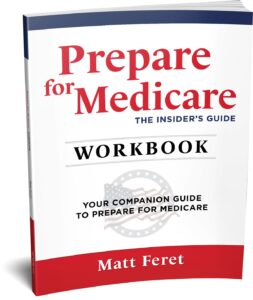Hi there Matt!
I’ve read both of your previous blogs on Medicare ratings – these are so informative; thank you! I’ll be reading about the Medicare Advantage Open Enrollment Period too! Based on your knowledge of the Medicare Star Rating system, what Star Ratings should I look for when electing Medicare coverage?
Sincerely,
Eileen P.
Hi there Eileen!
I advise you to use the star ratings as one aspect of your Medicare insurance coverage decision. I urge you not to consider any Medicare Advantage or Part D Prescription Drug Plan lower than a three-and-a-half star rating. However, the difference between three and three-and-a-half or the difference between three-and-a-half and four just isn’t statistically significant. You probably won’t know the difference. In my opinion, Medicare Star ratings shouldn’t overshadow other considerations like premium, network, MOOP (Maximum-out-of-Pocket, or your prescription drug coverage.
How to Choose Medicare Plans Based on Medicare Ratings
That said, Medicare Star Ratings are important to you because, ultimately, if your plan is rated three stars or below, it generally means you’ll pay more money for your policy, or your benefits won’t be as rich as plans with four stars or higher. This is because Medicare insurance companies get bonuses and rebates from the federal government for higher star ratings. When they get this bonus money, they have to spend much of it to improve the insurance benefits or lower the monthly premiums for the Medicare insurance plan. So, if you have a four-star rated plan, odds are you have better benefits available to you as compared to a two-star rated plan.
That’s another reason why I recommend you consider only three-and-a-half star or higher-rated Medicare insurance plans. A low star score is generally thought of as two-and-a-half or below. Suppose a plan consistently scores at two-and-a-half stars or below. In that case, Medicare will add a “low performing plan” indicator on Medicare’s own website. It looks like an upside-down triangle with an exclamation point and often limits enrollment from the Medicare website.
In fact, people on plans that get this “low performing plan status ” get letters in the mail from Medicare informing them of the company’s performance. Not good if you’re an insurance company, and not good if you’re on that plan!
Do star ratings really matter? Sure. They matter because they give an overall indication of the quality and customer experience of a given Medicare Advantage plan or Medicare Part D Prescription Drug Plan. Is there a significant difference between a three-star plan and a four-star plan from the consumer’s standpoint or experience? Probably not.
There are flaws, to be sure, and the rules insurance companies must abide by change every year. However, the real impact on you, the consumer, is that higher-performing plans are paid more by the federal government per person enrolled. Most of that additional money must be put back into benefits or lower insurance policy premiums, which, in the long run, is better for you and your wallet.
I hope this helps!
Yours,
Matt F.
Subscribe Today to My Prepare for Medicare Newsletter and Stay Up-to-Date on Medicare Changes!
My newsletter is an exclusive subscription-only newsletter that delivers the inside scoop to help you stay updated with your Social Security and Medicare insurance coverage, highlight Medicare and Social Security news you can use, and provide reminders for important dates throughout the year. Subscribe today for FREE!
Author Bio Matt Feret is the author of the Prepare for Social Security -The Insider’s Guide and the Prepare for Medicare – The Insider’s Guide book series and launched PrepareforSocialSecurity.com to help people get objective answers to questions about Social Security and Medicare. Matt is also the host of The Matt Feret Show. He has held leadership roles at numerous Fortune 500 Medicare health insurers in sales, marketing, operations, product development, and strategy for over two decades.






